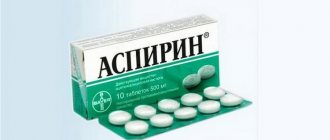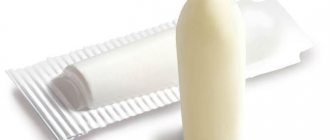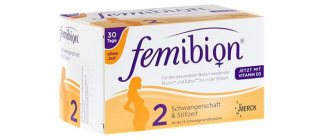Doctors prescribe the drug Canephron, which is approved for lactation. Its composition is completely natural and does not contain toxic components, so there is no need to switch the baby to the formula.
It is prescribed because during pregnancy, especially in the third trimester, the mother’s body experiences great stress. The kidneys work harder, and bladder problems worsen. But even after childbirth, hormonal changes affect the blood vessels - often a woman experiences swelling of the lower extremities, face, and hands.
In addition, during the period of establishing breastfeeding, immunity is significantly reduced, which can provoke exacerbation of inflammatory processes in the kidneys and bladder.
Composition with description of components
The drug Canephron stands out among other analogues due to its natural plant components:
- Rosehip peel helps with kidney failure. Rosehip is a natural diuretic;
- rosemary and lovage relieve inflammation in the kidneys and relieve swelling;
- centaury has an anti-inflammatory effect, reduces the permeability of the capillaries of the kidneys.
Indications and contraindications
Canephron is prescribed for the following diseases:
- chronic infections of the urinary system (cystitis, pyelonephritis);
- inflammation of the kidneys of non-infectious origin (glomerulonephritis, interstitial nephritis, kidney stones).
The natural herbal composition of the medicine makes it suitable for use by children, pregnant women, and breastfeeding women. The drug is contraindicated for exacerbations of gastrointestinal diseases, as well as for individual intolerance.
Breastfeeding is not an obstacle to taking Canephron, since the drug does not pass into milk.
Composition and dosage form
During pregnancy and childbirth, all systems of a woman’s body work under conditions of increased stress. The sensitive female body is extremely susceptible to diseases of the genitourinary system, which is the result of the location of the internal organs. The development of such a delicate problem as cystitis is well known to every second representative of the fair sex.
The problem needs to be dealt with promptly. Choosing an effective product while feeding a baby is not an easy task. The composition must quickly solve problems, be soft enough, and safe for the health of the mother and baby.
Modern pharmacology takes on board the centuries-old experience of mankind. Methods for processing medicinal herbs are becoming more and more effective, allowing for maximum therapeutic results. One of the market leaders offers a reliable remedy that allows you to bring relief to the body in the shortest possible time. Young mothers are especially concerned about the safety of the product for the baby’s health.
To understand the specifics of using the product, consider the composition and form of application. The presence of components of plant origin determines the high effectiveness of the medicinal substance and minimal risk to the body.
The developers of the drug organically combined the features of medicinal herbs with the latest technological developments. The manufacturing process is carefully controlled at all stages from growing herbs to processing. The product is a harmonious combination of three herbs: rosemary, lovage, centaury. Additionally, natural ingredients are used.
The medicine is available in the form of syrup and tablets. The latter are safer during pregnancy and lactation. The healing properties of the herbs used to make the product have been well known for thousands of years.
The main safety principle when taking any drug is to avoid self-medication and choose the ingredients yourself. Even if the medicine worked well for friends with similar problems, there is no guarantee that the reaction of the body of the mother and child will be positive. The attending physician is well acquainted with the characteristics of the patient’s body and individual intolerances. You can take the drug after consultation, development of dosage, and establishment of a dosage schedule.
We recommend reading: Postpartum endometritis - causes, symptoms, diagnosis and treatment
Instructions for use
Pregnant and lactating women should take Canephron strictly as prescribed by a doctor. The doctor will select an effective dosage of the drug. In addition, despite the gentle effect of the drug, Canephron can cause an allergic reaction, because it contains medicinal plants that can cause hives, peeling of the skin and even Quincke's edema. If there are any changes in your health, you should notify your doctor at the antenatal clinic.
Most often, during pregnancy or breastfeeding, 2 tablets are prescribed 3 times a day.
The course of taking the medication ranges from two weeks to one month.
The dragee cannot be chewed, but only swallowed.
While taking the drug, it is important to drink plenty of fluids, preferably pure non-mineral water. However, if the functioning of the cardiac vascular system or kidneys is impaired, you should not drink a lot of liquid.
If there is an inflammatory process in the kidneys and disruption of their function, you should not take Conephron exclusively. It is important to consult a urologist or nephrologist.
Is it possible to take Canephron while breastfeeding? Canephron during breastfeeding
“Canephron N” is produced by Bionorica SE and is a phytotherapeutic drug that contains the following components:
- centaury (Centaurium erythraea);
- lovage (Levisticum officinale);
- rosemary (Rosmarinus officinalis).
One tablet contains centaury herbs 18 mg, lovage root 18 mg and rosemary leaves 18 mg. 100 g of alcohol solution for oral drip contains 0.6 g of centaury herb, 0.6 g of lovage root, 0.6 g of rosemary leaves. Other ingredients: ethanol 19%, purified water.
Canephron during breastfeeding, having such pharmacological properties as antispasmodic, diuretic, antioxidant, anti-inflammatory, antibacterial and nephroprotective, has occupied a “worthy niche” in the treatment of inflammatory diseases of the urinary tract in women during this period of their life.
Efficacy and safety have been confirmed in many clinical studies, most of which were conducted in the CIS countries.
When to use
A total of 18 results of clinical studies on the use of Canephron have been published, which tested the effectiveness and safety of this drug in prevention and therapy:
- urinary tract infections (UTIs) in adults;
- UTI and urinary tract anomalies in children (as a treatment for vesicoureteral reflux and after surgical correction of anomalies);
- kidney stones in adults;
- specific diseases of the female genital area (canephron was mainly tested during pregnancy and pregnancy);
- The effect of Canephron therapy on the course of congenital malformations in children in the postpartum period was also tested.
Based on these clinical studies, it was concluded that the use of Canephron has a positive effect on infectious and inflammatory processes in the urinary tract. When used, spontaneous elimination of small oxalate stones is possible.
Canephron during lactation and pregnancy is a safe and well-tolerated drug.
Warnings and Adverse Reactions
The instructions indicate that Canephron is contraindicated in the following situations:
- peptic ulcers of the upper gastrointestinal tract;
- the occurrence of a hypersensitivity reaction to the components of the drug in the past;
- Canephron is not used in monotherapy for renal and heart failure.
Of the above contraindications for a nursing mother, the most important is the absence of an allergic reaction to the components of the drug. Since it is possible to determine whether this reaction will occur in the baby or the mother only after starting to take Canephron.
Therefore, it is worth using the drug in recommended doses and carefully monitoring changes in the health status of both yourself and your baby. If any rash or intestinal problems appear, you should consult a doctor, who will clarify the cause and, if necessary, recommend taking another medication.
Indications for use
Canephron can be taken not only for treatment. Doctors often prescribe it to nursing mothers to prevent the development of urolithiasis. This drug also prevents the formation of kidney stones. This is a very important therapy for women suffering from chronic kidney and urinary tract diseases, as well as frequent cystitis.
After childbirth, the body of young mothers is weakened. It takes a lot of time to restore it. Therefore, in the first six months it is advisable to take maintenance medications to prevent various diseases.
The instructions for Canephron indicate the following indications for use of the drug:
- cystitis, accompanied by pain when urinating;
- kidney stones, causing pain in the lumbar region, blood in the urine, pain when urinating;
- inflammation of the renal pelvis;
- glomerulonephritis, which affects the glomeruli;
- kidney calyx diseases.
You can take Canephron during lactation only after examination and an accurate diagnosis. Usually this requires tests and an ultrasound.
If inflammatory processes are detected in young mothers, treatment should be started immediately, regardless of the course of the disease.
This is necessary in order not to start the disease and not to cause a deterioration in health, which may be accompanied by the spread of infection throughout the body.
Reviews from doctors and patients
Reviews from doctors and patients about the drug Canephron during breastfeeding are overwhelmingly positive, but there are also negative ones:
In the first days after giving birth, my feet were very swollen; my slippers couldn’t even fit. After taking Canephron, within a week the swelling went down and I was able to wear my usual shoes. It’s good that this drug is compatible with breastfeeding.
Ekaterina, 27 years old
One of the disadvantages of “soft” means is that it takes time to get results. “You can’t expect an immediate effect, especially with hormonal changes after childbirth. I believe that herbal ingredients cannot quickly solve the problem of puffiness. The drug is not cheap, so I won’t take it anymore.”
Evgeniya, 28 years old
Many reviews about the drug are left by pregnant women and women who have just given birth, since a complication such as gestosis often occurs:
“Canephron was first prescribed in the third trimester of pregnancy, when signs of gestosis appeared. Three days after taking the first pills, my fingers became noticeably thinner and I was able to remove my ring. Of course, I had to adjust my diet: remove salt and marinades. After giving birth, I continued to breastfeed and take these pills until the swelling went away.”
Elena, 23 years old
Doctors prescribe Canephron if the inflammatory process is not so strong and a herbal preparation can cope with it:
“Canephron has a number of advantages, including a low risk of allergic responses. But with regards to the antibacterial effect, Canephron is inferior here to the same Phytolysin and Cyston.”
Semenova N.A., obstetrician-gynecologist
Composition of the drug
Canephron is available in two forms: drops and tablets. Both releases have exactly the same effect, but differ in composition in one ingredient - alcohol. It is not contained in tablets, but in drops it makes up a small percentage. However, there is no need to be afraid to take Canephron drops, since its quantity is small. But the best use would still be in tablets, because each mother and baby have their own characteristics in the body.
Canephron tablets
Positive reviews from nursing and pregnant women taking these tablets or drops do not appear without reason. After all, the drug has a natural composition and is well tolerated. Canephron tablets contain the following active ingredients:
- rosehip peel - 30 mg;
- centaury - 18 mg;
- rosemary - 18 mg;
- Lubostok - 18 mg.
And excipients:
- mountain glycol wax;
- red iron oxide;
- sucrose;
- calcium carbonate;
- Castor oil;
- shellac;
- lactose monohydrate;
- riboflavin (E101);
- dextrose;
- povidone;
- colloidal silicon dioxide;
- modified corn starch;
- titanium dioxide;
- talc.
The composition of Canephron drops is similar to the composition of tablets, plus the alcohol content is 19 vol.% per 100 grams. A nursing mother may have an intolerance to alcohol-containing drugs, so drops can be easily replaced with a drug in the form of tablets.











